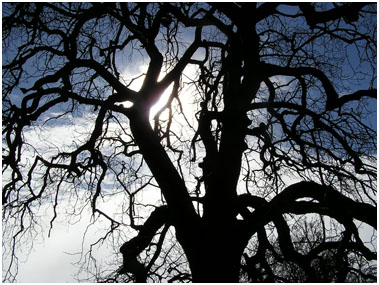BY IAN DAVISON
I began to take note of this problem after returning to my home, where the night sky is beautifully glittered with stars every summer night, from a brief vacation to San Francisco. While in the city, my family and I were walking to our hotel long after the sun had set and I was surprised by how dim the moon was. When I tried to locate the Big Dipper, I could not see even a single star. The next night we came home, and as I lay in bed (in a screened-in structure designed for sleeping outside to enjoy the summer sky) I could not help but wonder why the familiar constellations were there that night, but not the night before in the city. When I asked my parents about this perplexing phenomenon, they said it was light pollution. Upon hearing the word “pollution”, I immediately gave this new concept a disdainful mental label. After this experience, I did not give much thought to the topic for a few years.
Then, a 2008 publication of National Geographic renewed my interest in light pollution. Verlyn Klinkenborg of National Geographic wrote that some of the most prominent victims of light pollution are birds confused by the unnatural evening conditions. Klinkenborg cites a study done by the Fatal Light Awareness Program (FLAP) that “estimates that in North America at least 100 million birds, mostly low-flying songbirds, die each year in collisions with man-made structures.” The abnormal illumination can also disrupt migratory patterns by giving the impression of more frequent, longer days, disturbing birds’ circadian rhythms.
This problem also has repercussions for bats and nocturnal frogs that are much less active in bright environments. While lights do attract bats’ prey, it makes the bats more visible to predators, driving the insect-eaters away from their food source. This can lead to insufficient nutrition, diminishing their population. Like the bats, frogs are repelled by unusually bright surroundings, driving them into potentially inhospitable regions. Frogs’ breeding patterns are also affected because the light decreases their propensity to sing in hopes of attracting a mate.
Fortunately, the harmful abundance of light in major cities worldwide is relatively easily rectified, as compared to other current environmental issues like climate change. The solution is in making simple, small changes, like decreasing the amount of light reflected back up into the sky by shielding street lamps and other outdoor light fixtures. As with many of the current problems induced by mankind, the cause of this issue is wasteful behavior; light pollution could be decreased tremendously if light were used more efficiently. A proposed method is to turn off street lights in less traveled areas from midnight until five A.M. One of the leading organizations working to reduce the consequences of excessive lighting practices is the International Dark-Sky Association, which has been pushing for a variety of legislative measures to remedy the issue.
What we may not realize is that this is not only a predicament faced by nocturnal animals. Like it or not, light pollution impacts people as well. In an attempt to benefit society by increasing the amount of time we can work, we have effectively decreased the time normally allotted for sleeping, vital to our health. What’s more, a 2006 study conducted by Richard Stevens of the University of Connecticut suggests that there is a correlation between this disruption of circadian rhythms and an increase in breast cancer rates of women living in light-polluted areas. On a more fundamental level, we are ultimately disconnecting ourselves from nature and our environment by eliminating our exposure to natural events, like the shift from light to dark with the setting of the sun. We are separating ourselves from the land on which we thrive and from which we came, our global heritage. We are inadvertently excising an essential part of who we are as a species, severing one of our ties to Mother Nature.
 All images on this page by Ian Davison
All images on this page by Ian Davison